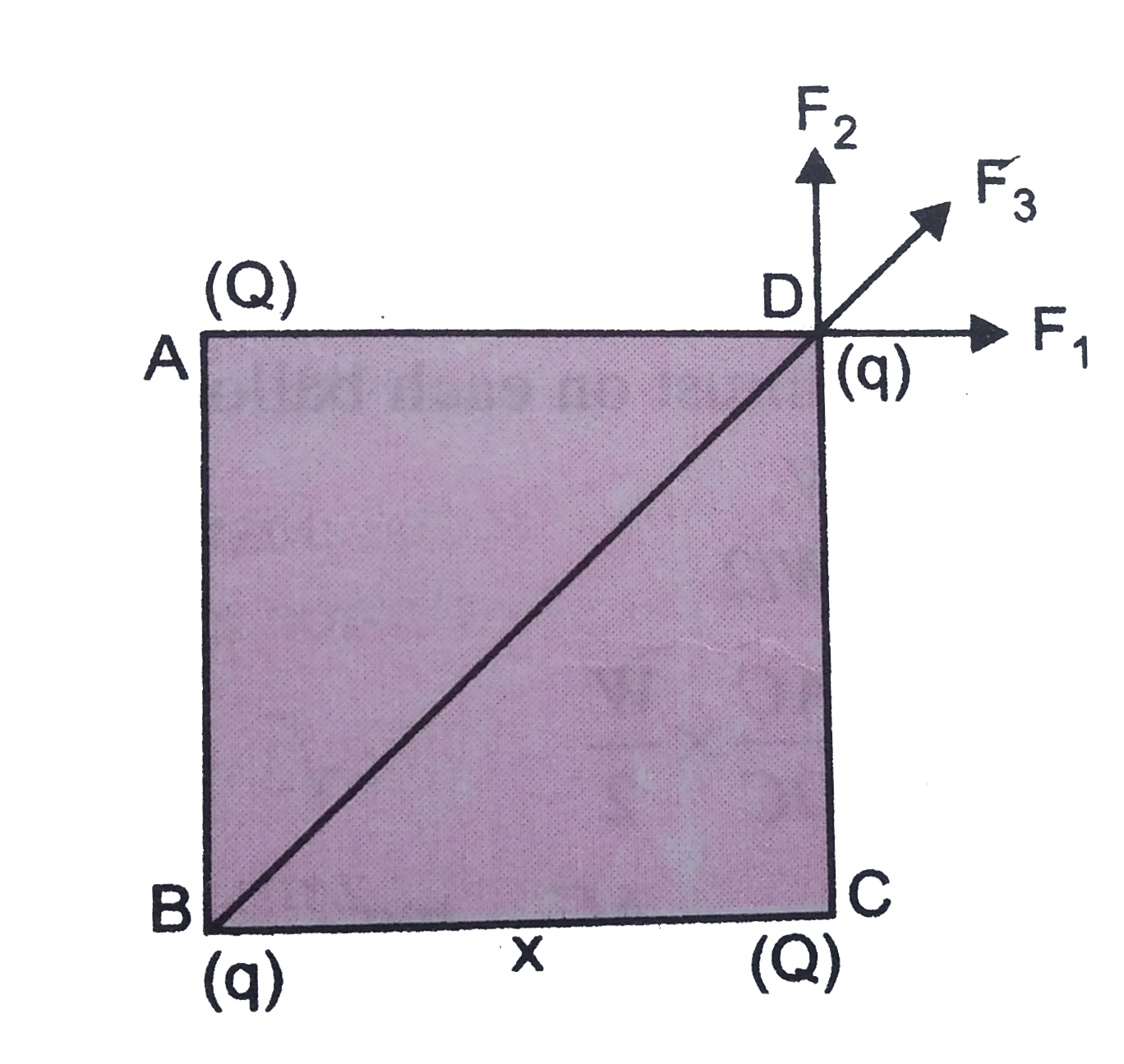Text Solution
Verified by Experts
The correct Answer is:
|
Topper's Solved these Questions
ELECTROSTATICS
PRADEEP|Exercise FILL IN THE BLANKS|8 VideosView PlaylistELECTROSTATICS
PRADEEP|Exercise PROBLEMS FOR PRACTICE|8 VideosView PlaylistELECTROSTATICS
PRADEEP|Exercise VALUE BASED QUESTIONS|7 VideosView PlaylistELECTRONIC DEVICES
PRADEEP|Exercise Fill in the Blanks|1 VideosView PlaylistMAGNETIC EFFECT OF CURRENT AND MAGNETISM
PRADEEP|Exercise Competition Focus (Multiple Choice Questions)|2 VideosView Playlist
Similar Questions
Explore conceptually related problems
Knowledge Check
Similar Questions
Explore conceptually related problems
PRADEEP-ELECTROSTATICS-Exercise
- Two small charged spheres contain charge +q(1) and +q(2) respectively....
05:12
|
Play - Three point charges of +2muC, -3muC , and -3muC are kept at the vertic...
09:27
|
Play - A charges Q is placed at each of the two opposite corners of a square....
05:34
|
Playing Now - Equal charges each of 20 muC are placed at x = 0, 2,4,8,16 cm on X-axi...
06:06
|
Play - Charges q(1) = 1.5 mC, q(2) = 0.2 mC and q(3) = -0.5 mC, are placed at...
03:47
|
Play - Two similarly and equally charged identical metal spheres A and B repe...
04:02
|
Play - Let us assume that charges on Earth and Sum are not neutralised and ne...
03:31
|
Play - In a certain co-ordinate system, charge, q(1) = -2xx10^(-4) C is at x ...
04:21
|
Play - Two positive charges which are 0.1m apart repel each other with a fo...
02:33
|
Play - Indenify X in the following nuclear reactions (in the first reaction, ...
03:21
|
Play - Two equally charged particles, held 3.2xx10^(-3) m apart, are releas...
03:48
|
Play - The SI unit of electric field intensity is
02:22
|
Play - Electric field due to a single charge is
02:04
|
Play - Electric dipole moment is
02:17
|
Play - Electric field intensity (E) due to an electric dipole varies with di...
03:41
|
Play - If E(a) be the electric field strength of a short dipole at a point on...
01:56
|
Play - Electric field due to an electric dipole is
02:24
|
Play - When an electric dipole is held at an angle in a uniform electric ...
03:16
|
Play - Potential energy of an electric dipole held at an angle theta in a u...
02:16
|
Play - Force vec(F) acting on a test charge q(0) in a uniform electric fie...
01:59
|
Play
